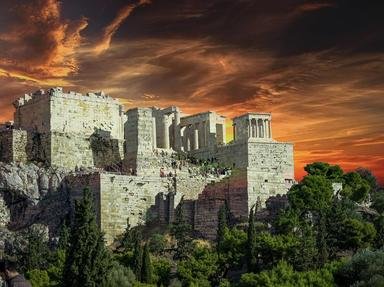Quiz Answer Key and Fun Facts
1. The Greek Dark Age generally is thought to have started with the collapse of which Greek civilization?
2. Many scholars believe that invasion or migration into the central and southern Greek world by these northern Greek peoples directly caused or helped to bring on the Dark Age. Who were these northern people?
3. The return of this Hero's descendants to the Peloponnesus has traditionally been associated with the early Dark Age. Who is the hero?
4. The Dorians are most often associated with the greatest of Peloponnesian cities. What is the name of this Doric Greek-speaking city?
5. During the Dark Age, many scholars believe there was significant de-population of Mycenaean Greece and that people scattered from the population centers to the country-side. What is the name of the farmsteads or homes that arose and grew in number during the Dark Age?
6. What happened to the great cities of Mycenaean Greece?
7. Perhaps the most significant factor that made the Dark Ages "dark" was the loss of which technology?
8. The Dorians are thought by some to have a weapons advantage over the Mycenaen Greeks because of what the formers' weapons were made of. What were the Dorians' weapons made of?
9. The classical Greeks who came to be known as the Boeotians(Thebes was their main city)and settled northwest of Attica(Athens), in an area known to Homer as Cadmeis, moved south during the Dark Age from where?
10. The Dark Age city that suffered the least disruption was, at least according to Thucydides, which later great classical city-state?
11. With the Dark Ages, Greece lost its ability to write. How did the Greeks afterwards convey stories and history?
12. In terms of burial practices, the Dark Ages is mainly associated with chamber burial?
13. Pottery coming out of the Dark Age was said to be radically different from the Mycenaean period. What was it called?
14. One event may mark, perhaps more than others, at least to this writer, the end of the Greek Dark Age with the celebration of this event. What is it?
15. The Dark Age transitioned, according to modern historians, into what period?
Hint:"As in olden times,when wishing still did some good...."
Source: Author
Craterus
This quiz was reviewed by FunTrivia editor
gtho4 before going online.
Any errors found in FunTrivia content are routinely corrected through our feedback system.
